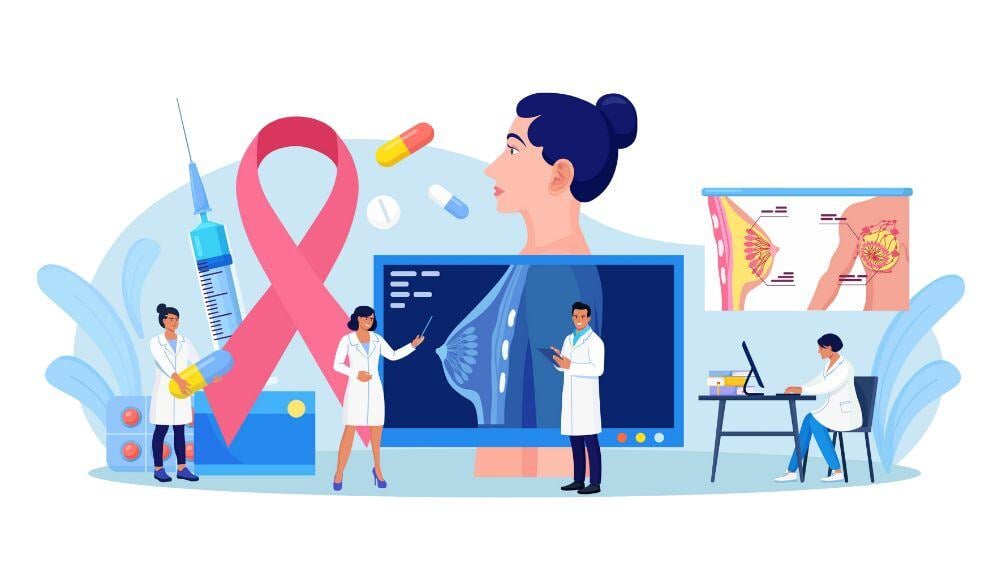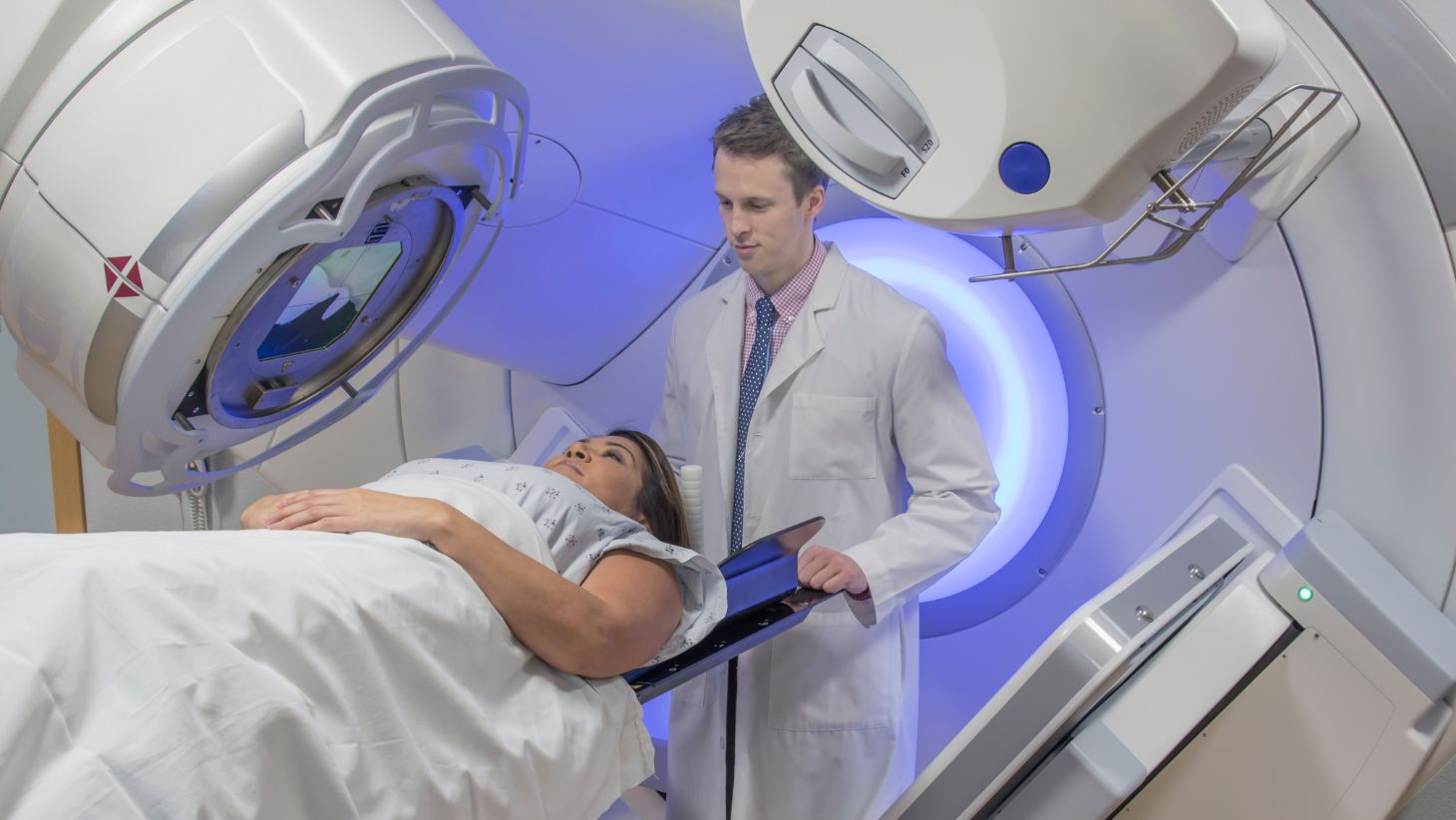Breast cancer isn’t a singular disease. It’s actually a broad category with many variations called subtypes. These subtypes were defined after clinical researchers studied breast cancer’s specific molecular makeup. Treatment plans are now based on what’s most likely to work for each patient’s molecular subtype of breast cancer. Let’s look at the subtypes of breast cancer and how they affect the recommended treatments.
Molecular Subtyping of Breast Cancer
Molecular subtypes classify breast cancer based on what makes the cancer cells grow. This can be hormones such as estrogen or progesterone or an overgrowth of the HER2 protein. None of these are present in some cases and more than one is found in other cases.
Identifying the molecular subtype of your breast cancer allows the oncologist to choose therapies that are specifically designed to counteract that type of breast cancer.
The four main molecular subtypes of breast cancer include:
- Luminal A
- Luminal B
- HER2-positive
- Triple-negative
Luminal A Breast Cancer
Luminal A breast cancer is often referred to as hormone receptor-positive and HER2-negative (HR+/HER2-). This subtype is the most common type. It is characterized by being estrogen receptor-positive and progesterone receptor-positive, with no signs of HER2 protein causing the cancer to grow. It also tends to be slow-growing and has a good prognosis. This is because there are low levels of the Ki-67 protein, which can fuel cancer growth.
Luminal B Breast Cancer
Luminal B breast cancer is classified as hormone receptor-positive and HER2-positive (HR+/HER2+). This is sometimes referred to as triple-positive breast cancer. These patients tend to have a higher level of the Ki67 protein, causing the cancer to grow more aggressively than Luminal A.
Hormone receptors found on the breast cancer cells can be for estrogen or progesterone, although most Luminal B cancers are estrogen-positive. Compared to Luminal A, this subtype is associated with a poorer prognosis due to larger tumor sizes and faster growth. It’s also more likely to recur. Despite this, luminal B breast cancer still has a relatively high survival rate.
HER2-Positive/HER2-Enriched Breast Cancer
HER2-enriched breast cancer is HER2-positive and may or may not also be hormone-positive. HER2-positive breast cancers tend to grow quicker and are more aggressive than Luminal A. Because of this, they tend to have a less favorable prognosis compared to hormone-positive breast cancer. With the many recent advancements in treatment options for HER2-positive, the prognosis for this type of cancer is improving.
Triple-Negative Breast Cancer (TNBC)
Triple-negative breast cancer does not have receptors for estrogen, progesterone, or HER2. This aggressive form usually originates in the breast ducts. Because it grows quickly, this type of breast cancer tends to have a poorer prognosis compared to other types of breast cancer. Despite the challenges in treating TNBC, recent developments in treatment hold promise for improving outcomes for patients with this breast cancer type.
Using Molecular Subtyping for Breast Cancer Treatment
Oncologists consider various factors when determining a patient's plan for breast cancer treatment. An approach that works for one person may not be effective for another based on their molecular subtype. By understanding which hormones and/or proteins are fueling your cancer's growth, if any, the oncologist can create a plan that counteracts this.
Treatments for Breast Cancer Subtypes
Surgery is almost always part of the breast cancer treatment process. Chemotherapy and radiation therapy may also be used for all types of breast cancer.
Other therapies are selected based on molecular subtype, stage, and lymph node involvement. Here are some common treatment approaches based on breast cancer molecular subtypes:
- Luminal A Breast Cancer: Because hormones are fueling this subtype, hormone therapies are used to reduce the levels of progesterone and/or estrogen, slowing the cancer's progression. It can also be used to prevent the cancer from returning.
- Luminal B Breast Cancer: Both hormones and an overgrowth of HER2 protein fuel this type of breast cancer. Because of this, hormone therapies and targeted therapy will likely be a part of the plan to counteract both.
- HER2-Positive Breast Cancer: Treatment focuses on therapies that target the HER2 protein, such as monoclonal antibodies. These antibodies are designed to attack HER2-positive cells to halt their growth.
- Triple-Negative Breast Cancer: Since TNBC lacks receptors for estrogen, progesterone, and HER2, it cannot be treated with hormone therapies. Instead, treatment options often include chemotherapy, immunotherapy, radiation therapy, and targeted therapy. If the cancer has not spread, treatment often involves surgery.
Read our blog: Triple-Negative Breast Cancer: Why Is It Harder to Treat?
Hormone Therapies for Breast Cancer
Hormone therapy treats hormone receptor-positive breast cancer by reducing or blocking estrogen, which fuels tumor growth. It can shrink tumors before surgery, slow advanced cancer growth, and lower recurrence risk.
Commonly used hormone therapies include:
- Aromatase inhibitors: Lower estrogen production (e.g., anastrozole, exemestane, letrozole).
- Selective Estrogen Receptor Modulators (SERMs): Block estrogen in specific cells (e.g., tamoxifen, toremifene, raloxifene).
- Selective Estrogen Receptor Downregulators (SERDs): Prevent estrogen from acting on cells (e.g., elacestrant, fulvestrant).
For early-stage breast cancer, many women take hormone therapy for five years. This might include tamoxifen or a combination of tamoxifen and aromatase inhibitors, depending on whether a patient is pre- or post-menopausal. Recent research shows that taking tamoxifen for 10 years instead of five can lower the risk of cancer returning and improve survival in some cases.
Post-menopausal women with cancer in the lymph nodes (node-positive) may continue aromatase inhibitors for up to 10 years after surgery.
Targeted Therapies for Breast Cancer
Some examples of targeted therapies commonly used to treat breast cancer include:
- Trastuzumab - a HER2 targeted therapy
- Pertuzumab - a HER2 targeted therapy
- Everolimus - a targeted therapy that can be used for hormone-positive patients or triple-negative breast cancer patients.
Personalized Breast Cancer Treatment in Willamette Valley
The breast cancer specialists at Willamette Valley Cancer Institute offer breast cancer patients personalized treatment approaches with the latest therapies. Our experts will take several factors, including your breast cancer molecular subtype, into consideration to create an effective treatment plan and a more accurate prognosis.
If you're located in the Willamette Valley or the Central Oregon Coast and received a breast cancer diagnosis, find the WVCI location nearest you to schedule an appointment. We also provide second opinions on a treatment recommendation.



